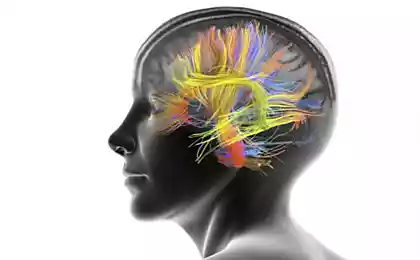163
How to use NLP for manipulation. We study so we don't get caught.

Neuro-linguistic programming is all around us. In advertising, politics, sales, personal relationships. These techniques can be tools of help or tools of manipulation. Knowing the mechanisms of NLP is your shield from unfair exposure and an opportunity to better understand the human psyche.
What is NLP and why does it work?
NLP emerged in the 1970s through the work of Richard Bandler and John Grinder. They studied successful therapists and identified patterns of their impact on clients. The basic idea is that our brain processes information using certain algorithms, and these algorithms can be learned and used.
The human brain processes about 11 million bits of information every second, but is only aware of 40. The rest happens on a subconscious level – this is where NLP techniques work.
Manipulators exploit our perceptions. They know that we make decisions emotionally and then rationalize them. They exploit our cognitive biases, social needs, and biological responses.
Basic techniques of NLP manipulation
Emotional anchorage
Imagine that every time a seller talks about the benefits of a purchase, he touches your shoulder. After a few repetitions, touch automatically causes a sense of benefit. This anchoring is the association of a neutral stimulus with an emotional state.
A real example: A politician during an election campaign always raises his hand when talking about the prosperity of the country. Voters begin to associate this gesture with positive emotions, even if the candidate's specific proposals are inconclusive.

Adjustment and maintenance
The manipulator first adjusts to your behavior - copies the posture, pace of speech, breathing. The brain perceives this as a sign of intimacy and trust. Then the manipulator begins to lead – gradually change your behavior, and you unknowingly follow it.
Research shows that people who copy our gestures and mannerisms seem more attractive and trustworthy. This effect is called the chameleon effect.
Speech patterns of exposure
Certain constructs of speech bypass critical thinking:
Presuppositions: “When you realize how profitable it is...” means that understanding will come.
False alternatives: “Do you want to buy a red car or a blue car?”
Built-in teams: "Don't think of a white monkey" - the brain ignores the "no" particle and focuses on the command.
Psychological tricks in action
Principle of social proof
"Most of our customers choose this package" - we instinctively follow the crowd, believing that if many do something, it's the right thing to do. Manipulators create the illusion of mass approval.
In the 1950s, psychologist Solomon Asch conducted an experiment that showed that 75% of people would agree with a group’s apparently wrong opinion if they didn’t stand out.
Creating urgency and scarcity
"There are only 3 items left!", "The offer is only valid until midnight!" - fear of loss forces us to make quick decisions. Deficiency activates ancient survival instincts.

Emotional swing
The manipulator first creates a problem or amplifies an existing pain, and then offers a solution. The contrast between negative and positive emotions makes the offer more appealing.
How to protect yourself from NLP manipulation
The 24-hour rule: Don’t make important decisions right away. Let the emotions cool down, the logic turn on. Manipulators always rush.
Stop frame technique: If you feel a strong emotional impact, stop mentally and ask yourself: What exactly is this person trying to make me do? ?
Benefits analysis: Always ask yourself, “Who benefits from this?” If the benefit is mainly on the side of the interlocutor, be alert.
Signs of NLP exposure
Physical signals: The interlocutor copies your posture, gestures, tempo of speech. Uses touch at key moments.
Speech markers: Often uses the words “you”, “your”, many questions that create the illusion of choice.
Emotional pressure: Creates artificial urgency, appeals to fears or desires.
Protection practices
Develop metacognitive skills – the ability to observe your thoughts and emotions from the outside. Regularly ask the question: “Why do I think this way?”, “What influenced my opinion?”
Study cognitive biases. Knowing how the brain deceives itself helps you notice manipulation. The confirmation effect, the availability heuristic, the status quo distortion are all tools of manipulators.
The Ethical Use of NLP
NLP can be a force for good. Psychotherapists use it to treat phobias and injuries. Teachers to better explain the material. Parents – for more effective communication with children. Ethical NLP serves the interests of the recipient, not the sender.
Studies show that NLP techniques can improve learning efficiency by 60% and therapeutic outcomes by 40% when applied correctly.
Conclusion
Knowledge of NLP techniques is not paranoia, but a necessary literacy in the modern world. We live in an era of information abundance, where attention has become a major resource. Those who are able to capture and hold attention get an advantage.
The best defense against manipulation is understanding how it works. Knowledge makes us free and ignorance makes us vulnerable.
Remember, every day you face dozens of attempts to influence. Advertising, news, social networks, personal communication – elements of NLP are used everywhere. Be careful, but don’t become cynical. Use knowledge to create more honest and effective communication.
Glossary
Neurolinguistic programming (NLP) is a branch of psychology and communication that studies the relationship between neurological processes, language, and behavioral patterns.
Anchoring is a technique for creating a conditioned reflex connection between a neutral stimulus and an emotional state.
Adjustment is the process of imitating the behavior, speech or emotional state of the interlocutor to establish trust.
Conducting is a technique of gradually changing one’s behavior in order to direct the interlocutor in the right direction.
A presupposition is a statement that implies the truth of a certain fact without its direct proof.
Cognitive distortions are systematic errors in thinking, deviations from logic and rationality in judgment.
Metacognitive skills – the ability of a person to analyze their own thought processes, “thinking about thinking”.
Availability heuristic is the tendency to rate the probability of an event by how easily examples of such an event come to mind.
Dr. Hinohara's Secrets of Longevity: How to Live to 105 with a Clear Mind
Introversion: Your nature, not the problem























